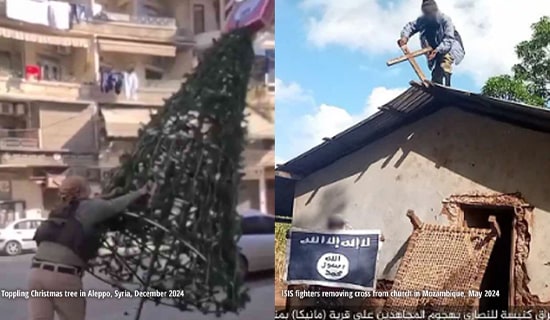Support or opposition to the Iran nuclear deal, the JCPOA, must be based on familiarity with its actual language and provisions.[1]
The following are some examples of actions that Iran is permitted to perform under the JCPOA, contra to what has been said by U.S. administration officials.
Iran Can Pursue The Development Of A Nuclear Device And Key Nuclear Technologies
Under the JCPOA, Iran is not banned from "designing, developing, fabricating, acquiring, or using multi-point explosive detonation systems suitable for a nuclear explosive device", nor is it banned from "designing, developing, fabricating, acquiring, or using explosive diagnostic systems (streak cameras, framing cameras and flash x-ray cameras)" if these activities are "approved by the Joint Commission for non-nuclear purposes and subject to monitoring."
If anything should have been totally and absolutely banned by this agreement it is activity specifically suited for the development of a nuclear bomb. President Obama's declared rationale for the agreement is to distance Iran from this objective. Secretary of State John Kerry likewise stated that "Iran has agreed never to pursue key technologies that would be necessary to develop a nuclear explosive device." But JCPOA allows such activity, under certain conditions.
Moreover, Ali Akbar Salehi, head of Iran's Atomic Energy Organization, stated recently: "We are building nuclear fusion now, [which] is the technology for the next 50 years."[2]
Iran Can Prevent The Inspection Of Military Sites
Under the JCPOA the IAEA cannot go wherever evidence leads. The JCPOA specifies that requests for inspection "will not be aimed at interfering with Iranian military or other national security activities." This means, in effect, that Iran may reject a priori any request to inspect a military site.
This provision has been stressed by Iranian regime figures, from Supreme Leader Ali Khamenei downwards. Khamenei stated: "(The foreigners) shouldn't be allowed at all to penetrate into the country's security and defensive boundaries under the pretext of supervision, and the country's military officials are not permitted at all to allow the foreigners to cross these boundaries or stop the country's defensive development under the pretext of supervision and inspection."[3] Iranian Foreign Minister Javad Zarif said that such inspections crossed a red line and that, in the negotiations, Iran had managed to ensure that the agreement would not allow them.[4] Khamenei's top adviser for international affairs, Ali Akbar Velayati, stated: "Access of inspectors from the IAEA or from any other body to Iran's military centers is forbidden."[5]
Conversely, U.S. administration spokespersons persist in claiming that military facilities will also come under inspection, in total contradiction to the language of the JCPOA and to the Iranian position.
There Will Be No Snap Back Of Sanctions
Under the JCPOA, snap back is not automatic but requires the approval of the UN Security Council.
Additionally, a clause in the JCPOA specifies that "Iran has stated that it will treat such a re-introduction or re-imposition of the sanctions specified in Annex II, or such an imposition of new nuclear-related sanctions, as grounds to cease performing its commitments under this JCPOA in whole or in part." This contradicts other clauses in the JCPOA which stipulate that sanctions will be re-imposed in case of Iranian violations. The inclusion of these mutually contradictory clauses in the agreement makes the re-imposition of sanctions subject to litigation, at best, for Iran can contend that the other side is in violation of the agreement.
Sanctions Can Be Lifted After Less Than Eight Years
Under the JCPOA the sanctions need not remain in place for eight years but can be lifted earlier, since it is specified that "Transition Day will occur eight years from Adoption Day or upon a report from the Director General of the IAEA... stating that the IAEA has reached the Broader Conclusion that all nuclear material in Iran remains in peaceful activities, whichever is earlier [emphasis added]."[6]
Arak Will Remain A Heavy Water And Hence A Plutonium-Capable Facility; Iran's Plutonium Pathway Is Not Totally Blocked
According to the JCPOA, Iran will "modernize" and "redesign" the heavy-water reactor in Arak, but may continue operating it as a heavy water facility, which is a key element in plutonium production.
[1] For the text of the JCPOA, see http://apps.washingtonpost.com/g/documents/world/full-text-of-the-iran-nuclear-deal/1651/; for Annex I of the JPCOA see http://www.eeas.europa.eu/statements-eeas/docs/iran_agreement/annex_1_nuclear_related_commitments_en.pdf.
[2] English translation provided by english.farsnews.com, August 9, 2015.
[3] English.farsnews.com, July 25, 2015.
[4] Latimes.com, July 22, 2015
[5] English.farsnews.com, August 1, 2015.
[6] It should be noted that UN Security Council Resolution No. 2231, passed several days after the JCPOA, states that "Iran is called upon not to undertake any activity related to ballistic missiles designed to be capable of delivering nuclear weapons, including launches using such ballistic missile technology, until the date eight years after the JCPOA Adoption Day or until the date on which the IAEA submits a report confirming the Broader Conclusion, whichever is earlier." (Un.org, July 20, 2015).
This provision "calls upon" Iran not to engage in the development of ballistic missiles as a means of delivering nuclear weapons for 8 years. Iran rejected the inclusion of this provision in the JCPOA and agreed to its mention only in UNSCR 2231, which it does not consider to be binding.





